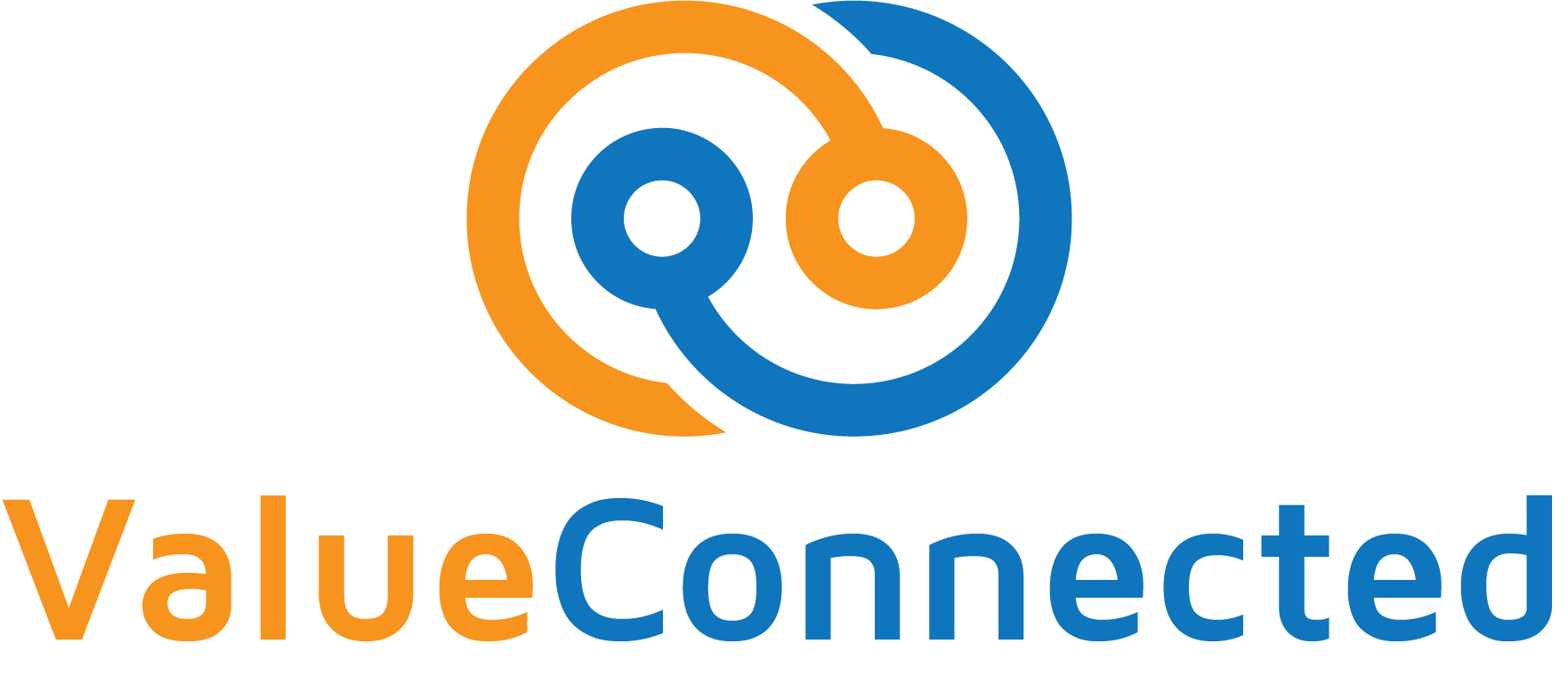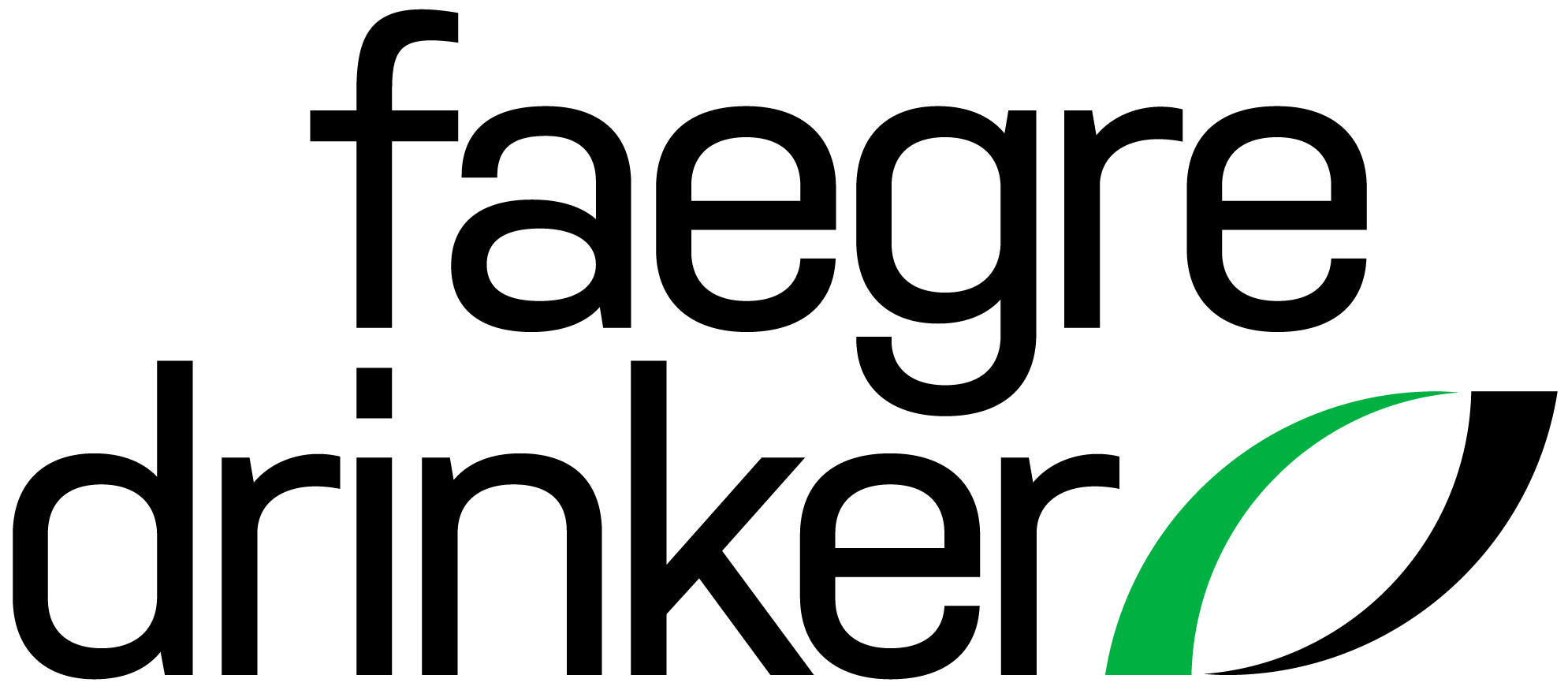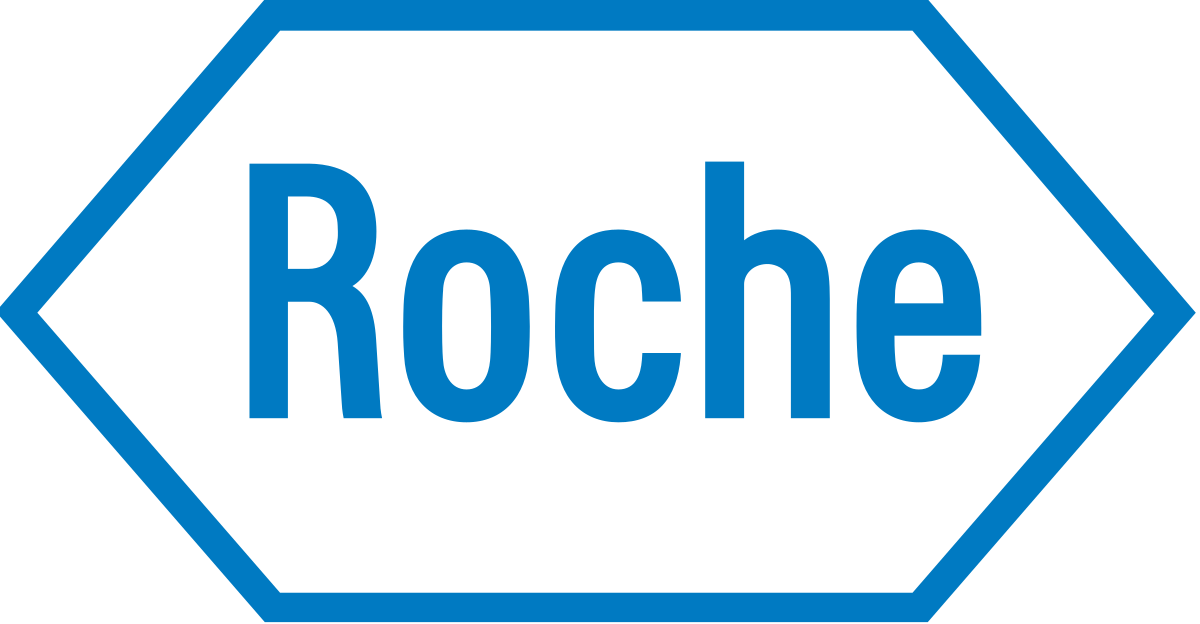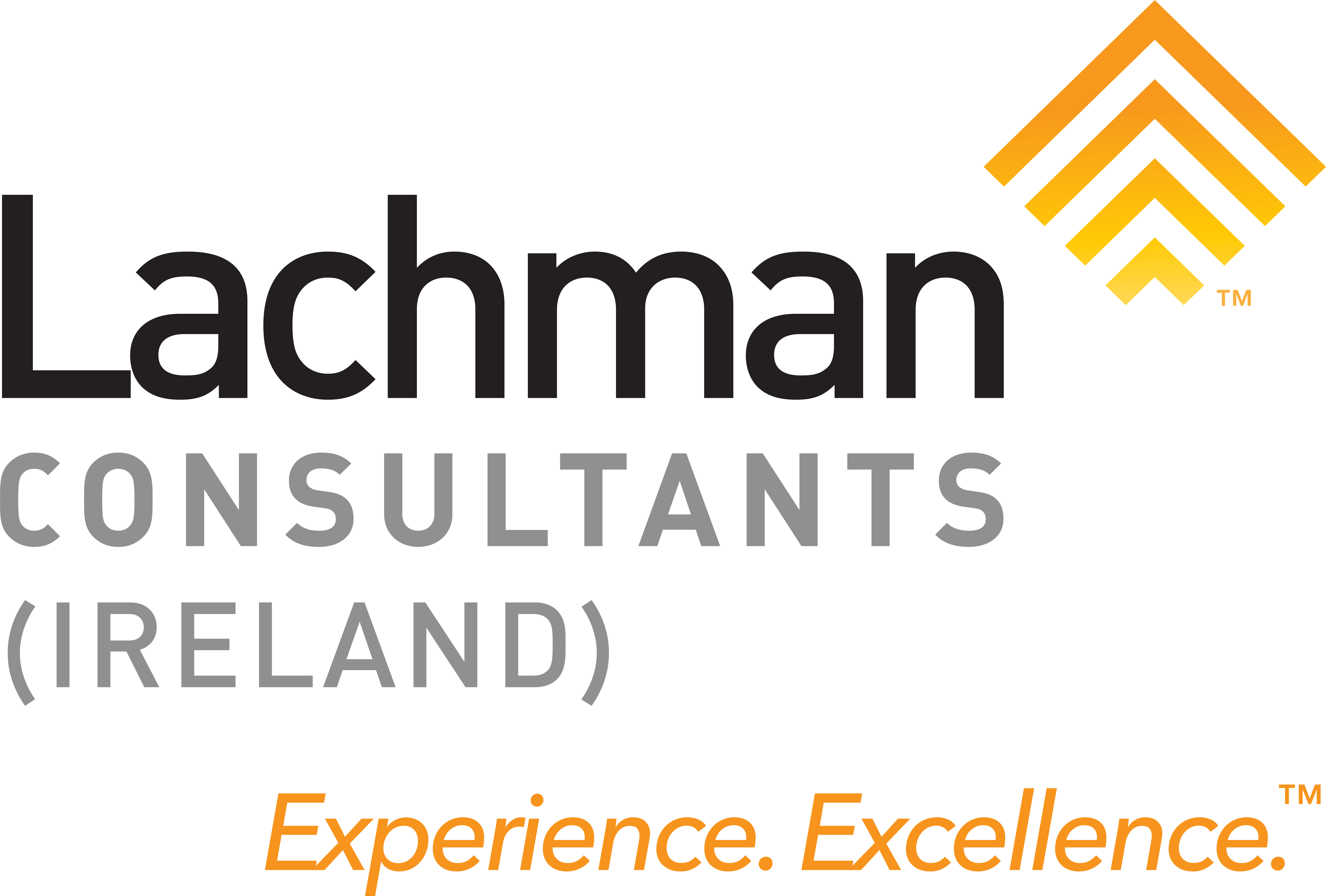
Moderator:
- Sue SAVILLE (Health Event Facilitator)
Speaker:
- Oliver BISAZZA (CEO, MedTech Europe)
Global leaders from European medical technology manufacturers will join the discussion and speak openly about the latest trends, challenges and opportunities they are facing.
Moderator:
- Sue SAVILLE (Health Event Facilitator)
Speakers:
- Jeremy EAKIN (Chief Executive Officer, Eakin Healthcare)
- Toni SCHROFNER (Chief Officer Medical Division & Member of the Executive Board, Dräger)
- Bronwyn BROPHY (Incoming CEO, Vitrolife)
Moderator:
- Julie RACHLINE (President, LallianSe)
Speakers:
- John MACNAMARA (VP R&D, Medtronic)
- Enrique CLAVEROL-TINTURE (Head of the Medical Technologies Programme, European Innovation Council, European Commission)
- Maeve MCGRATH (Head Healthcare Innovation, Roche) View presentation
This session will consider where we can increase Notified Body capacity to support the implementation of the IVD Regulation system. Can we simplify the complexity and reduce the time of conformity assessment and other major Notified Body activities? What role should regulators, Notified Bodies, manufacturers and other stakeholders play?
Moderator:
- Megha IYER (Director, Global Strategic Regulatory Affairs, Thermo Fisher Scientific)
Speakers:
- Andreas STANGE (Senior Vice President MHS regulatory & quality, TÜV SÜD)
- Kira MEYEROVICH (Manager RA Advocacy, BD Life Sciences)
- Flora GIORGIO (Acting Head of Unit of DG Sante D3, European Commission)
Moderator:
- Wim VANDENBERGHE (Partner, ReedSmith)
Speakers:
- Marjolijn KLAVER (VP Strategy and Market Development, Johnson & Johnson)
- Jelena MALININA (Data Director, EURORDIS)
- Ronan CAHILL (Professor of Surgery, University College Dublin)

Moderator:
- Elia TZIAMBAZIS (Europe, Middle East & South America Lead for Climate & Sustainability in Healthcare, Managing Director & Partner, The Boston Consulting Group)
Speakers:
- Charline WURZER (Central Europe Lead for Climate & Sustainability in Healthcare, Partner, The Boston Consulting Group) View presentation
- Armida GIGANTE (Senior Manager Sustainability Western Europe, Medtronic)
- Renata SCOFIELD (Senior Sustainability Director, GSK)

Moderator:
- Richard CHARTER (Vice President MedTech Market Access - Europe & Asia Pacific, Alira Health)
Speakers:
- Frederico CALADO (Vice President, Global Real-World Solutions, Alira Health)
- Rachele BUSCA (Director, HTA and Real-World Evidence EMEACLA, Edwards Lifesciences) View presentation
- Rossana ALESSANDRELLO (Value-based Procurement Director, Agència de Qualitat i Avaluació Sanitàries de Catalunya (AQuAS))
Moderator:
- Adrian IONESCU (Professor at Swiss Federal Institute of Technology Lausanne, EPFL Ecole Polytechnique Fédérale de Lausanne) View presentation
Speakers:
- Marco MARSELLA (Head of Unit DG for Communications Networks, Content and Technology, European Commission) View presentation
- Alexander MEYER (Professor, Deutsches Herzzentrum der Charité)
- Nathalie VIRAG (Distinguished Scientist, Corporate Technology and Innovation, Medtronic) View presentation
- Ger JANSSEN (Department head AI, Data Science & Digital Twin, Philips)
Moderator:
- John KILMARTIN (Vice President Regulatory Affairs Coronary & Renal Denervation, Medtronic)
Speakers:
- Flora GIORGIO (Acting Head of Unit of DG Sante D3, European Commission)
- Royth VON HAHN (Senior Vice President Global Head of Medical & Health Services, TÜV SÜD Product Service Division)
- Christelle RATIGNIER-CARBONNEIL (Director, General French National Agency for the Safety of Medicines and Health)
- Lorraine NOLAN (Chief Executive, Health Products Regulatory Authority)

The medical technology sector is responding to the call for a greater focus on sustainability.
The sum of each equipment manufacturer’s ESG actions has created momentum within the industry and improved the sustainability outlook overall.
But with growing environmental sensitivity, momentum in this area can mean competitive advantage for those who sustain it.
Circular Economy solutions for medical equipment offers an opportunity to accelerate sustainability and reduce your environmental impact significantly.
This translates as thoughtful selection of environmentally friendly or sustainable raw materials; clever design to enable easy assembly and disassembly; manufacturing for durability to extend the life of the product, and development of new business models to support the case for refurbishment and reuse.
To discuss the challenges and benefits of embracing a circular path, we’ve assembled a group of experts who will openly share their experience and insights on the emerging trends in sustainable product design and manufacturing in the healthcare industry.
Moderator:
- Jesus RUEDA RODRIGUEZ (Director General Strategies, Special Projects & International Affairs, MedTech Europe)
Speakers:
- Christian CLARUS (Global Government Affairs & Market Access, B. Braun)
- Niels SOERENSEN (Head Global Procurement, Roche Diabetes)
- Ffion JACKSON (Global Lead Sustainable Chemicals, Siemens Healthineers)
- Daniele FAZIO (VP Business Development, Flex Health Solutions) View presentation

In November 2022, the EU Agency for Cybersecurity (ENISA) published the 2022 Cybersecurity Threat Landscape. The report follows the European Commission’s proposed Cyber Resilience Act, a regulation aimed at shoring up the cybersecurity of connected digital products. This case reflects a trend of legislative interventions reinforcing the European digital space. However, recent cybersecurity breaches (including notorious cyberattacks on the Irish Department of Health and the Health Service Executive) show that European healthcare systems remain dangerously exposed to the evolving threat landscape. This session aims to discuss the European cybersecurity threat landscape, particularly in relation to health, including possible legislative and non-legislative methods to bolster the security, safety and trust of healthcare delivery.
Moderator:
- Asel IBRAIMOVA (Counsel, ReedSmith)
Speakers:
- Neil O'HARE (Group CIO & Professor of Health Informatics, Children's Health Ireland & University College Dublin (UCD))
- Chris TYBERG (Chief Information Security Officer, Abbott)
Innovative Payment Schemes are a key mechanism to guarantee the timely access of European patients to innovative value-adding medical technologies and procedures. A mapping conducted by MedTech Europe end of 2022 has demonstrated the existence of 21 IPSs in 8 of the 32 European countries scoped for this project.
This session will offer you the possibility to learn more about IPSs in general and about two of them in particular (Funding Mandate in England and the Early Coverage framework for innovative DMDs in France) by interacting with those who manage them in their respective countries.
Moderator:
- Rachele BUSCA (Director, HTA and Real-World Evidence EMEACLA, Edwards Lifesciences)
Speakers:
- Oleg BORISENKO (Director, MTRC (MedTech Reimbursment Consulting)) View presentation
- Daniel BAMFORD (Deputy Director, Medtech and Digital, Innovation, Research and Life Sciences, NHS England) View presentation
- Louisa STÜWE (Project Director, Minsterial e-Health delegation, Ministry of Health and Prevention, France) View presentation
European healthcare systems are increasingly expected to serve not only patients but also the planet. What does this mean for the ecological and social footprint of medical technology manufacturers, their technologies, and their evolving missions? Join this high-level panel to hear directly from industry leaders about their sustainability journey to date
Moderator:
- Oliver BISAZZA (CEO, MedTech Europe)
Speakers:
- Sophie DUTILLOY (President International Vision Care Franchise, Alcon)
- Stuart SILK (President EMEA, Latin America, Canada, Stryker)
- Samih AL MAWASS (Divisional Vice President, EMEA (Europe, Middle East & Africa), Abbott Vascular)
- Urmi PRASAD RICHARDSON (EMEA President, Thermo Fisher Scientific)

Moderator:
- Eric HAUSCHILD (Director of Business Development EMEA, ValueConnected)
Speakers:
- Ernesto NOGUEIRA (CEO and Founder, ValueConnected)
- Ciska JANSSENS-BÖCKER (Director of Clinical Marketing, ValueConnected)
- David DELAHUNTY (Global New Product Introduction, 3M)

The continent of Europe is going through its perennial turbulence and predictions of its global demise abound. Whilst the war on Ukraine, uncontrolled migrant inflows, high price inflation from energy security of supply concerns and an aging population are significant challenges, there are many economic and social opportunities emerging from technological progress in the continent’s global lead to pivot towards digitisation and greening of production and consumption. Medical technologies are at the vanguard of the potential renaissance for Europe but many impediments remain.
This keynote address will set out the contemporary economic conditions facing businesses globally from historically tight labour markets, significant wage growth, decades’ high consumer price inflation and tightening of monetary policy correcting the extended period of low interest rates. The post pandemic recovery continues to disrupt existing business delivery channels with the advent of concerns for sustainability of economic, social and environmental models becoming existential. The governance of this disruption will require social cohesion, a strength of the often maligned European Social model.
The so-called ESG Agenda (with its focus on environmental, social & governance) may well be the defining agenda of this century. The address will contrast how Europe in taking a coordinated global lead on these issues with other global blocks and how it may be best placed to succeed if it can amend short-term impediments like European Union Medical Devices Regulations.
Moderator:
- Jude WEBBER (Ireland Correspondent, the Financial Times)
Speaker:
- Danny MCCOY (CEO, Ibec)
With one year left until the European database on medical devices, EUDAMED, becomes fully functional, this session provides an interactive discussion on EUDAMED system & stakeholder readiness from various perspectives including manufacturers, service providers, Notified Bodies and the European Commission. We will discuss EUDAMED transparency considerations and provide an opportunity for the audience to ask the experts their own questions. Join our interactive panel to get the latest EUDAMED insights!
Moderator:
- Kevin TAYLOR (Associate Director Regulatory Affairs Digital Capabilities EMEAC, Johnson & Johnson MedTech)
Speakers:
- Olga VAN GROL-LAWLOR (Manager Global Regulatory Intelligence & Advocacy, Boston Scientific)
- John O'SULLIVAN (Industry Engagement Officer, Medical Devices, NSAI Certification (National Standards Authority of Ireland - Notified Body))
- Lionel TUSSAU (Healthcare Market Unit , Global Lead, Atrify)
- Orla DALY (Policy & Legal Officer, DG SANTE Unit D3 - Medical Devices, European Commission)
Moderator:
- Yves VERBOVEN (Senior Adviser, MedTech Europe)
Speakers:
- Flora GIORGIO (Acting Head of Unit of DG Sante D3, European Commission)
- Maya MATTHEWS (Acting Director, Head of Unit, HTA, European Commission - Directorate-General for Health and Food Safety DG SANTE C : Digital, EU4Health and Health Systems Modernisation)
- Michael VOGL (Medical Device Specialist - Expert Panels ad Groups Office, European Medicines Agency – EMA)
- Andrea RAPPAGLIOSI (Senior Vice-President Public Affairs, EMEA, Canada and LATAM, Edwards LifeSciences)
- Richard HOLBOROW (Head of Clinical Compliance / Clinical Physiologist, BSI)

MedTech outperformed the S&P 500 nearly twofold from 2012 to 2019, but investor skepticism has returned since then and performance has stalled with TSR growing at 3% CAGR from 2019 – 2022 compared to 21% CAGR from 2012 – 2019. Can we continue to copy the tried and tested recipe from the last decade or do we need to change how we think about value creation? During our session, we will explore the main challenges for value creation in the next decade and how we can think out of the box to create value.
Speaker:
- Karsten DALGAARD (Senior Partner, McKinsey & Company)

During this interactive session, attendees will have the opportunity to learn about best practices to successfully go through conformity assessment procedures under the MDR and IVDR. This will include discussions about how to prepare the conformity assessment, how to maintain good working relationship with its notified body at all time and avoid delays or surprises during the review.
Speaker:
- Fabien ROY (Partner, Hogan Lovells)

Don't miss the opportunity to join Rudolf Wagner, who leads Huma’s Quality Assurance & Regulatory Affairs, alongside Alex Gilbert, Vice President of MedTech, for an insightful discussion on how regulated frameworks for Software as a Medical Device can contribute to the development of distinctive companion apps. This session is designed to be interactive and promises to provide valuable insights from the team behind the first disease agnostic Class IIb SaMD.

“Precision medicine” to the pharmaceutical industry is the answer to what their most competitive offerings are and will be. But precision medicine is not driven by drugs, its driven by the MedTech industry. MedTech supplies the diagnostics, platforms, services, and IT to fuel discovery to commercialization of precision medicine for the pharma industry, and the M&A and alliances between MedTech and Pharma are fundamental to the development and delivery of precision medicine worldwide. Join us in a panel with luminaries from pharma and MedTech to discuss the precision medicine ecosystem and how to navigate its new frontier on a global Scale
Speaker:
- Kristin POTHIER (Global & National, HCLS Deal Advisory & Strategy Leader, KPMG US)

This session will review the latest trends in HTA processes and evidence requirements for emerging medtech innovations, from Digital health products in the UK, to the German DiGA requirements for software apps, as well as the USA Medicare program's latest efforts to create a seamless pathway for FDA Designated breakthrough devices. Join Stephen Hull, founder and president of Hull Associates to discuss the ways in which your company can anticipate the demands for clinical and economic evidence beyond what is needed for regulatory approval to successfully support reimbursement and market access.
Speaker:
- Stephen HULL (Founder and President, Hull Associates LLC)
Moderator:
- Patrick BOISSEAU (Director General, Industry Strategic Initiatives, MedTech Europe)
Speakers:
- Rocco DE BERNARDIS (WW President Robotic Programme, Johnson & Johnson)
- Dirk BARTEN (Sr VP & GM EU Commercial & Marketing, Intuitive Surgical)
- Richard JANSEN (Senior Director Surgical Robotics Sales, Medtronic)
- Mathieu BADARD (VPGM Joint Replacement, Europe, Stryker)

Moderator:
- Peter BLENKINSOP (Partner, Faegre Drinker)
Speakers:
- Chantal VETS (Senior Legal Director, Privacy Global Program Leader, Medtronic)
- Aoife O'ROURKE (Director, European Data Protection Officer, Cook Medical)
- David MURPHY (Assistant Commissioner, Irish Data Protection Commission)
The transition to the EU MDR and IVDR will have an impact on access to markets around the world. The concept of CE-marking, well established in the EU, is used in many countries outside Europe to support medical devices’ registrations. This session will address the global impact of the EU regulations and solutions to maintain access to international markets. Join us for an exciting panel discussion to explore how leading medtech manufacturers are managing the impact on their international registrations and addressing the questions posed by regulatory authorities outside the EU.
Moderator:
- Emmett DEVEREUX (Director of Government and Regulatory Affairs EMEA, COOK Medical EMEA Group and Chair of the International Group at MedTech EU, Cook Medical EMEA Group)
Speakers:
- Philippe AUCLAIR (Senior Director Regulatory Strategy, Abbott)
- Rana CHALHOUB (Regulatory Affairs Director, Mecomed)
- Peter SCHROEER (Director Europe, Quality Systems & Regulatory Affairs, Johnson & Johnson)

With rapidly evolving regulatory and market demands, medtech companies are under pressure to do more with less, requiring a fundamental shift in operations, systems, and processes. Our annual benchmark study found that while 54% are moving towards harmonized processes, the medtech industry lags behind in digital transformation compared to the life sciences.
In this session, we'll examine the study findings, including year-over-year progress. We'll also share insights for optimizing processes and leveraging technology to ensure compliance in light of EU MDR, IVDR, UDI, and eSTAR.
Additionally, we will hear from Dominik Reterski, Corporate Vice President, Quality Assurance and Regulatory Affairs, about how Teleflex is streamlining global processes, centralizing operations, and transforming corporate culture to drive efficiency and an attractive work environment.
Speakers:
- Charlene BOUMARD (Director, Regulatory Strategy, MedTech EU, Veeva MedTech) View presentation
- Dominik RETERSKI (Corporate Vice President, Quality Assurance/Regulatory Affairs, Teleflex)
Global leaders from European medical technology manufacturers will join the discussion and speak openly about the latest trends, challenges and opportunities they are facing.
Moderator:
- Sue SAVILLE (Health Event Facilitator)
Speakers:
- Rob TEN HOEDT (Executive Vice President & President, Global Regions, Medtronic, Chair of MedTech Europe)
- Alexander SOCARRAS (Executive Vice-President, Head of Global Commercial, DX Laborato, Siemens Healthcare Diagnostics Inc)
- Karsten DALGAARD (Senior Partner, McKinsey & Company)
Interoperability means different things to different people. This lecture will start with a definition of what it means in the military medical context and will introduce the additional concepts of interchangeability and integrateability. Why interoperability is important will be explored in several domains—within the Services of a nation’s armed forces; between military and civilian components of a national healthcare system; and between nations in both peace and war.
The “So what’s?” for medical industry will be discussed.
Moderator:
- Sue SAVILLE (Health Event Facilitator)
Speaker:
- Major General Tim HODGETTS

Artificial Intelligence (AI) in healthcare holds the promise to improve patient outcomes and healthcare systems. It can also tackle many healthcare challenges, including workforce shortages, healthcare financing and improving or even saving patients’ lives. With the launch of the AI Act, the EU has the potential to lead this area by building an advanced and fit-for-purpose regulatory environment and ensuring greater patient trust. While the proposed legislation will determine how and if new AI-enabled medical technologies will be placed on the market and reach patients, it begs the question of where AI-enabled medical technology is actually changing healthcare for the better on the ground and if the AI Act would become a hurdle or accelerator to the transformation.
Moderator:
- Eliza SLAWTHER (Senior Writer, MedTech Insight)
Speakers:
- Giovanni BRIGANTI (Chair of Artificial Intelligence and Digital Medicine, University of Mons, Belgium)
- Torie ROBINSON (CEO & Founder, Epilepsy Sparks)
- Corinne DIVE-RECLUS (Global Head of Lab Insights Business, Roche)
- Andrzej Jan RYS (Director for health systems, medical products and innovation, European Commission)
Moderator:
- Trevor GUNN (Medtronic)
Speakers:
- Dana FAGER (Medical Technologies, Supply Chain, and Health Data Analyst, United States Department of Commerce)
- Jesus RUEDA RODRIGUEZ (Director General Strategies, Special Projects & International Affairs, MedTech Europe)
- Tanya VOGT (SAMED (the South African Medical Technology Industry Association))

The manufacturing sector employed over 29 million people in the EU in 2020, across 2 million enterprises [Eurostat 2020]. The European Commission’s industrial strategy aims to ensure that European industry can lead the way as it embarks on a transition towards climate neutrality and digital leadership to make the EU industry more competitive globally. Protecting Europe’s manufacturing competitiveness is an imperative, as the impact of ‘limping from one crisis to the next’ unveils real challenges such as raw materials shortages, logistics, and supply chains breaking down; regional supply chains being resorted to, and reshoring. And yet, throughout these hurdles, manufacturing continues to shine as the star performer in Ireland’s considerable economic success, with Ireland's level of employment in high-technology manufacturing, as a share of total employment, now the highest in the EU, with 29% of manufacturing jobs in high technology sectors. This panel of experts will discuss some of the current challenging facing global manufacturing competitiveness and how the sector is responding through business model innovation, capital and technology investment, talent development and strategic partnerships. The role of policy in shaping the future EU manufacturing competitiveness will also be discussed.
Moderator:
- Sharon HIGGINS (Executive Director, Membership and Sectors, IBEC)
Speakers:
- Sean GAYER (Vice President, Operations, Boston Scientific)
- Gary HARTNETT (Vice-president of Partnership and External Supply, Janssen Global Supply Chain)
- Ann O'CONNELL (Irish Medtech Skillnet Manager, Ibec)
- Brendan SHEPPARD (CEO, Smart Factory)

Where COVID-19 already hugely disrupted our lives, our hospitals, and our healthcare systems, today we are facing the next challenge for our healthcare systems: the unprecedented shortages of healthcare workers, and huge capacity strains of hospitals.
The World Health Organization (WHO) recently warned that without immediate action the health and care workforce gaps in our region could spell disaster. 40% of medical doctors are close to retirement in 1/3 of countries in Europe and their places are simply not being filled. The hospital is no longer an attractive workplace, and Europe does not have a proper workforce planning in place.
And this has been exacerbated due to COVID-19, which added to burn-out, fatigue, stress of healthcare professionals. Professionals are leaving the profession, and patients are suffering from this every day.
Waiting lists to access care for example are now a reality throughout Europe, even in countries that did not have them in the past. And in the meantime, demand for care continues to grow as our population is ageing.
This session will look at how to reconcile the urgent and ever-growing need for care and treatment, with the growing gap in offer from healthcare workers, what the role for our innovative industry should be, and at what will it take to shift mind-sets and instigate sustainable change.
Moderator:
- Christelle SAINT-SARDOS (Sr Director Government Affairs and Access Policy EMEACLA, Edwards Lifesciences)
Speakers:
- Máirín RYAN (Deputy Chief Executive and Director of Health Technology Assessment, HIQA)
- Steve THOMAS (Edward Kennedy Professor of Health Policy and Management, Director Health Policy and Engagement, School of Medicine, Trinity College Dublin)
- Daan LIVESTRO (Strategist, Author of “Prevent the next wave” report, Gupta Strategists)
- Andrea RAPPAGLIOSI (Senior Vice-President Public Affairs, EMEA, Canada and LATAM, Edwards LifeSciences)
- Jennifer FRANKE (Former Chief Medical Officer Cardiology at Philips, Business Leader Image Guided Therapy Germany/Austria/Switzerland)

Speakers:
- David RAKOWSKI (Partner, Deloitte)
- Fearghal KEARNEY

Data Act, European Health Data Space, AI Act, GDPR and more regulation - what’s behind it? In this interactive session we will explore how upcoming legislation on data and AI relates to the medical device world and what legal landscape is beneath.
Speaker:
- Arne THIERMANN (Partner, Hogan Lovells)

Parts of the global MedTech industry thrived and others struggled to achieve their goals through the pandemic. This resulted in an uneven market with surpluses of cash for some companies and major cost cutting challenges for others, and some with both; necessitating a resetting of expectations and new creative options for both internal and external growth. From expansion in partnerships and alliances designed to serve the patient holistically without outright purchase, to “reintegration's” of companies who brought on new acquisitions too quickly to complete commercial transformation on a global scale. Join us in a panel with luminaries from across global MedTech to look at the hottest areas for growth, the data-driven trends and watch-outs, and the clinical, financial, and commercial success paths in the diagnostics, medical device, and digital technology of the future
Speakers:
- Brian EGAN (Life Sciences Leader, KPMG Ireland)
- Steve SAPLETAL (National Advisory Leader, Life Sciences, KPMG US)

Founders play a vital role in thriving medtech ecosystems. They are the nuclei of innovation and progress. These businesses come in a lot of different shapes and sizes, from early-stage ventures to high-growth scaleups, to multinationals and curating the surrounding ecosystem required at each stage is fundamental for their success. Ireland’s medtech ecosystem is over 100 years in the making, employing 45,000 people and the indigenous Irish medtech sector is a key component of Ireland’s medtech cluster, with over 200 companies employing 6,500 people. These companies are world-class, highly innovative and dynamic, delivering complex technologies, products and services throughout the world. With the international financing and the funding environment tightening, four founders will share their unique experience of taking on risk, from starting, to scaling, to IPO and what is required from an ecosystem to encourage and support same.
Moderator:
- Sinead KEOGH (Head of Sectors and Director, Medtech & Engineering, Ibec)
Speakers:
- Brian SHIELDS (CEO, Neurent Medical)
- Lucy O'KEEFE (Co-founder and CEO, CroiValve)
- Kieran DALY (Co-founder and CTO, Health Beacon)
- Elizabeth MCGLOUGHIN (Co-founder and CEO, Tympany)
- Patrick BOISSEAU (Director General, Industry Strategic Initiatives, MedTech Europe) View presentation

We would like to use the opportunity of the Medtech Forum in Dublin to present the ‘time for a sustainable transition’ as a bridge between achieving sustainability objectives to protect the planet and avoiding scarcity and delay in innovation in the medtech sector.
At a time when the European Union has put sustainability as a core pillar of its actions, the medtech sector, fully supportive of such political directions, is nonetheless becoming more and more under pressure. Hindered by the complexity of their healthcare technologies, medtech companies face challenges in adapting to environmental regulatory changes, moving ahead on faster timelines than medical device vertical legislation allows for re-design.
In order to actively contribute to the EU long-terms goals in sustainability, the medtech sector has developed the so-called time for a sustainable transition project, an industry-wide position which asks to take into consideration the long the innovation cycle and life of medical devices, in order to provide sufficient time to develop new sustainable products.
Moderator:
- Jan AHLSKOG (Senior Director - Food, Industrials, Chemicals & Environment, Fipra)
Speakers:
- Tomris OZBEN (President, EFLM)
- Alexander SOCARRAS (Executive Vice-President, Head of Global Commercial, DX Laborato, Siemens Healthcare Diagnostics Inc)
- Alexa TOOMEY (Head of Sustainability, Renewable Energy and Agtech, Enterprise Ireland)
- Joel TICKNER (Executive Director, Green Chemistry and Commerce Council)
Moderator:
- Yves VERBOVEN (Senior Adviser, MedTech Europe)
Speakers:
- Maya MATTHEWS (Acting Director, Head of Unit, HTA, European Commission - Directorate-General for Health and Food Safety DG SANTE C : Digital, EU4Health and Health Systems Modernisation)
- Andrea RAPPAGLIOSI (Senior Vice-President Public Affairs, EMEA, Canada and LATAM, Edwards LifeSciences)
- Conor TELJEUR (Chief Scientist, HIQA)
- Roisin ADAMS (NCPE)
- Judith FERNANDEZ (Deputy Director, International, HTA, HAS)
Moderator:
- Emmett DEVEREUX (Director of Government and Regulatory Affairs EMEA, COOK Medical EMEA Group and Chair of the International Group at MedTech EU, Cook Medical EMEA Group)
Speakers:
- Janet TRUNZO (Senior Executive Vice President, Technology & Regulatory Affairs, AdvaMed)
- Andrzej Jan RYS (Director for health systems, medical products and innovation, European Commission)
- Ali AL-DALAAN (Vice Executive President, Medical Devices Sector, Saudi Food & Drug Authority)
- Anna HALLERSTEN (Director and Head Regulatory Policy Europe, Co-Chair MedTech Europe IVD Regulatory Affairs Committee, Roche Diagnostics International Ltd.)
Interoperability in practice - What are the MedTech Industry’s costs for not becoming interoperable?
Moderator:
- Sabine DÖRHÖFER (Standard Domain Lead, Roche, Moderating in her capacity as co-chair of the interoperability working group,MedTech Europe)
Speakers:
- Roberto REALE (Advisor, Agency for Digital Italy) View presentation
- Michael WILKENING (Strategy and Business Development Medical Division, Dräger)
- Julia SKAPIK (Chief Medical Information Officer for the National Association, NACHC)

The current wave of regulatory activity at European level is creating a perfect storm that is causing Europe to sleepwalk towards a US-like litigation culture. A sharpening of liability laws, with the proposed drafts revising the Product Liability Directive and the AI Liability Directive strongly tipping in favour of consumers. The (uncoordinated) tightening of screws around horizontal and vertical safety regulations. The introduction of pan-European class actions and, last but not least, litigation funders are opening shops in several EU Members States incentivising a different consumer behaviour. These processes will result in an unavoidable increase in claims. The panel will discuss these developments and address what can still be done or should be done to avoid a US-like litigation culture coming to Europe.
Moderator:
- Teresa GRIFFIN (Partner, Faegre Drinker Biddle & Reath LLP)
Speakers:
- David MORKAN (Director and Senior Counsel EMEA, Cook Medical)
- Carolyn BLAKE (European Policy Consultant, US Chamber of Commerce Institute for Legal Reform)
- Susan WILSON (Director, Intellectual Property Policy, Intel)
- Simon NEILL (Asistant General Counsel, Johnson & Johnson)
Moderator:
- Richard CHARTER (Vice President MedTech Market Access - Europe & Asia Pacific, Alira Health)
Speakers:
- Richard CHARTER (Vice President MedTech Market Access - Europe & Asia Pacific, Alira Health)
- Praful MEHTA (CEO, Vamstar)
- Andrea RAPPAGLIOSI (Senior Vice-President Public Affairs, EMEA, Canada and LATAM, Edwards LifeSciences)
Moderator:
- Thomas SCHUMACHER (Vice President, VP Chief Legal Counsel, Data and Privacy, Medtronic)
Speakers:
- David MURPHY (Assistant Commissioner, Irish Data Protection Commission)
- Axel GRIEWEL (Associate Director, BCG Platinion)

Moderator:
- Kristin POTHIER (Global & National, HCLS Deal Advisory & Strategy Leader, KPMG US)
Speakers:
- Mike ANDERSON (Vice President Europe and APAC Operations, Stryker) View presentation
- Cassandra MELVIN (Senior Director of Business Development & Operations, SEMI Europe)
The Innovative Health Initiative (IHI) is the EU’s €2.4 billion public-private partnership to create an innovation ecosystem that facilitates the translation of scientific knowledge into tangible innovations. IHI implemented the first wave of consortia in 2023 and will continuously launch calls until 2027. Its mission is to bring together diverse academic and other public stakeholders for collaborative high-impact health projects with the biopharmaceutical, biotechnology and medical technology sectors, including companies active in the digital area. This session will focus on how medical technology companies can shape and join projects under IHI and share the experience of the IHI pioneers made at different stages of building IHI partnerships.
Moderator:
- Patrick BOISSEAU (Director General, Industry Strategic Initiatives, MedTech Europe)
Speakers:
- Fanny VAN DER LOO (Director Public Affairs | Edwards Lifesciences | Health | EU | EMEA | CAN | LATAM, Edwards Lifescience)
- Hugh LAVERTY (Executive Director IHI, IHI)
- Christian MUELHENDYCK (IHI Lead JNJ MedTech, Johnson & Johnson)
- Andrzej Jan RYS (Director for health systems, medical products and innovation, European Commission)

The conversation will surround the rapid advancement of new
technologies, the 510(k) process and post-market impact such as recalls and adverse trends, critical design factors and key considerations governing these products.
Moderator:
- Frances ZIPP (CEO, Lachman Consultants)
Speakers:
- Deanna ANDERSON (Senior Director, Lachman Consultants)
- John O'DEA (CEO, Palliare)
- Padraig MAGUIRE (Head of Quality & Regulatory Affairs, S3 Connected Health)
- Scott DECKEBACK (Manufacturing Data Integrity and Computer Validation, Lachman Consulting)
Global leaders from European medical technology manufacturers will join the discussion and speak openly about the latest trends, challenges and opportunities they are facing.
Moderator:
- Sue SAVILLE (Health Event Facilitator)
Speakers:
- Lisa EARNHARDT (Executive Vice President Medical Devices, Abbott)
- Mick FARRELL (CEO, ResMed)
- Joe ALMEIDA (Chief Executive Officer, Baxter)
Speakers:
- Rob TEN HOEDT (Executive Vice President & President, Global Regions, Medtronic, Chair of MedTech Europe)
- Oliver BISAZZA (CEO, MedTech Europe)

You are invited to Ireland in advance of the MedTech Forum to participate in the Irish Medtech Association's Meeting of Minds Digital Health Conference, 29 & 30 May, Dublin Convention Centre.
Ireland's medtech sector is over 100 years in the making and is recognised as a top five global hub. Understand how Ireland has built this ecosystem and is actively preparing for the next phase in its evolution. Hosted by the Irish Medtech Association, through the conference and the social programme, you will meet the Irish network, including; industry leaders, senior academics, key opinion leaders, government officials, regulators and more.
Comprising:
With 30 expert speakers, this unmissable event will also offer valuable networking opportunities with the irish ecosystem. Irish Medtech Association are delighted to be the cooperation partner for The MedTech Forum 2023. Full programme and tickets, visit the link https://www.medtechmeetingofminds.ie/